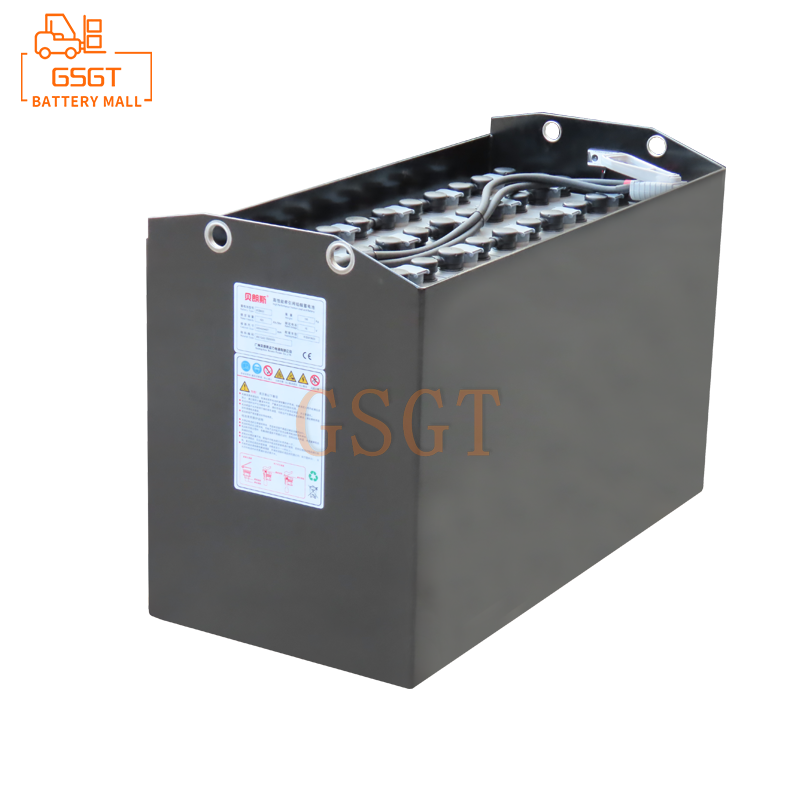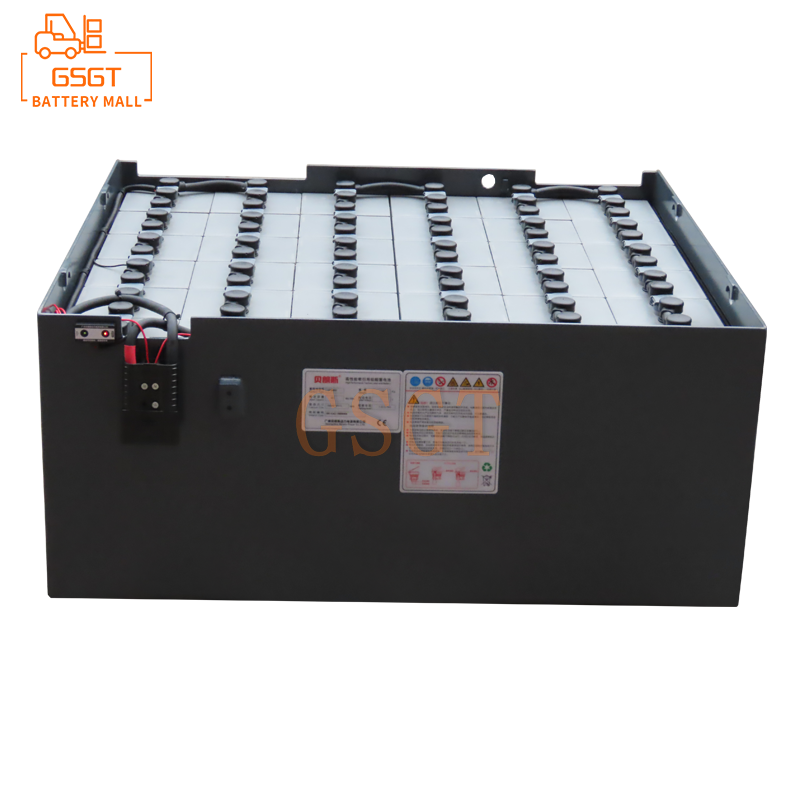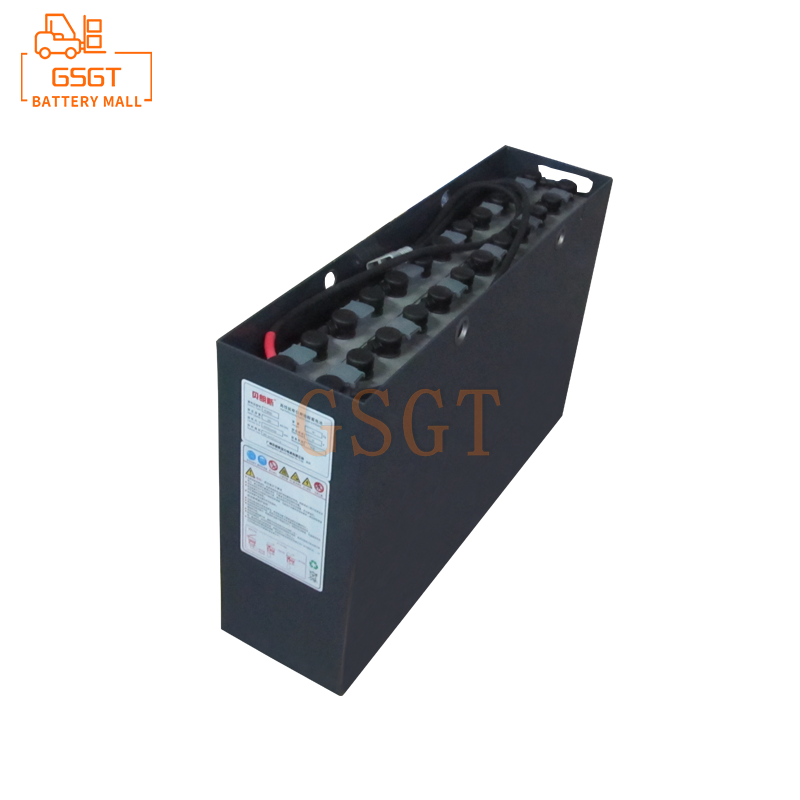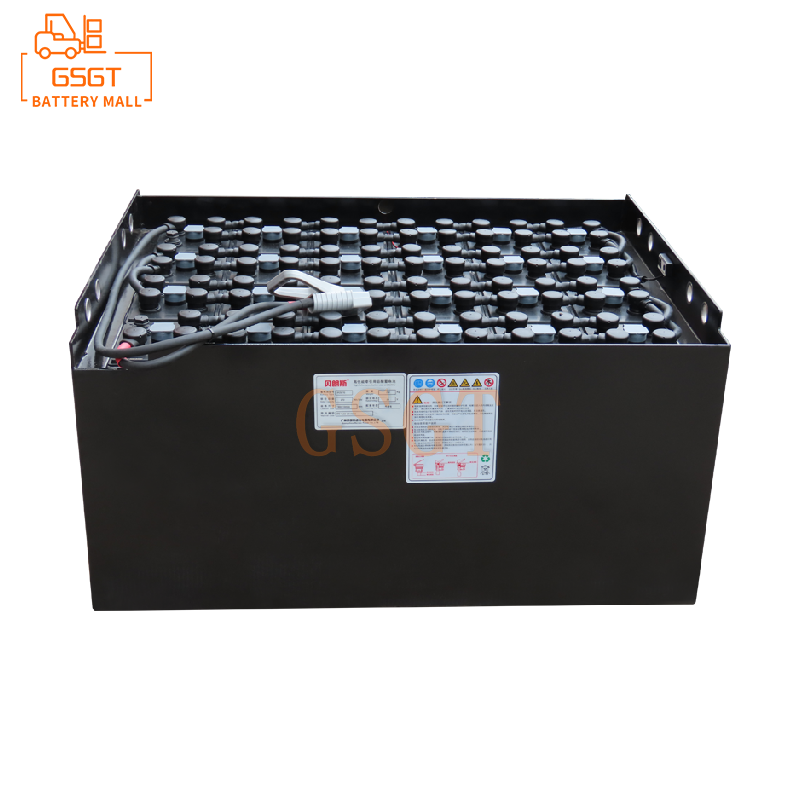Time:2025-05-07 12:11:36
Browse:528
In today's logistics and warehousing, factory workshops and other places, as an important handling equipment, the capacity selection of lead-acid batteries, the power source of forklifts, is of vital importance. Reasonable battery capacity not only ensures the efficient and stable operation of forklifts, but also reduces operating costs in the long run and enhances the economic benefits of enterprises. However, in the face of a wide variety of lead-acid battery products on the market, how to accurately select the appropriate capacity has become a major problem for many forklift users.
1.The lower limit of capacity is determined by the intensity of work
The intensity of work is the primary factor determining the capacity of lead-acid batteries in forklifts. In high-intensity operation scenarios, forklifts need to start frequently, travel, and load and unload goods, with long continuous working hours, which consumes a huge amount of battery power. At this point, if a battery with a capacity that is too small is selected, the forklift will frequently interrupt operations due to insufficient power and need to be charged, which will seriously affect work efficiency. According to relevant data statistics, a forklift that needs to be charged every 2 to 3 hours may have 20% to 30% less effective working time per day compared to one that can operate continuously for 6 to 8 hours. This will not only lead to the accumulation of goods, but also may cause customer dissatisfaction due to the delay in delivery time and affect the reputation of the enterprise.
Generally speaking, for such high-intensity operations, it is recommended to choose lead-acid batteries with a capacity of 400Ah to 600Ah to ensure the forklift can operate continuously and stably, meeting the demands of long-term and high-frequency operations. In small warehouses with lower work intensity, the daily working hours of forklifts are relatively short, and the handling tasks are relatively easy. A battery with a capacity of 200Ah to 300Ah is sufficient. In such scenarios, small-capacity batteries can not only meet the operational requirements of forklifts but also reduce procurement costs and avoid resource waste.
2. The Impact of Operating Environment on Capacity
Temperature factor: Temperature has a significant impact on the performance of lead-acid batteries. In low-temperature environments, such as cold storage operations, the viscosity of the battery's electrolyte increases, and the ion diffusion rate slows down, resulting in an increase in the battery's internal resistance and a significant decrease in its actual available capacity. Therefore, for forklifts operating in low-temperature environments such as cold storage facilities, it is necessary to appropriately increase the battery capacity to make up for the capacity loss caused by low temperatures. It is generally recommended that in low-temperature environments, the battery capacity should be increased by 20% to 30% on the basis of normal demand.
On the contrary, in a high-temperature environment, the self-discharge rate of the battery increases, and the corrosion of the plates intensifies, which also affects the service life and actual capacity of the battery. High temperatures may also cause an increase in the internal gas pressure of the battery, posing safety hazards. To cope with high-temperature environments, in addition to choosing batteries with good heat dissipation performance, the battery capacity can also be appropriately increased to ensure the stable operation of forklifts in high-temperature conditions. However, it should be noted that excessively high temperatures can cause significant damage to batteries. Even if the capacity is increased, the problem cannot be fundamentally solved. Therefore, in high-temperature environments, effective cooling measures should also be taken, such as installing cooling fans and setting up sunshades, to protect battery performance.
Driving conditions: The driving conditions of forklifts are also an important factor affecting the selection of battery capacity. If the forklift needs to frequently travel on slopes or the ground of the operation site is uneven, the driving resistance increases. The forklift motor needs to consume more electrical energy to overcome the resistance, thereby accelerating the battery power consumption. For instance, at construction sites and other locations, forklifts not only have to carry heavy objects but also travel on uneven roads. Under such circumstances, compared with driving on flat warehouse ground, battery power consumption may increase by 30% to 50%. Therefore, for forklifts operating in complex road conditions, batteries with larger capacity should be selected to ensure that the forklifts have sufficient power to complete the operation tasks.
3. Balance between Cost Budget and Capacity
Purchase cost: Large-capacity lead-acid batteries are usually more expensive. Take the common lead-acid battery for forklifts as an example. When the capacity increases from 300Ah to 500Ah, the price may rise. For enterprises with limited budgets, excessively high purchase costs may bring considerable economic pressure. However, if batteries with too small capacity are chosen merely for the sake of low prices, problems such as frequent battery replacement and low operational efficiency in the later stage will instead increase the overall operating costs of the enterprise. Therefore, when enterprises consider the purchase cost, they need to comprehensively weigh the short-term input against the long-term benefits. For enterprises with relatively abundant funds and high requirements for forklift operation efficiency, appropriately increasing the budget and choosing batteries with larger capacity and better performance is more conducive to the development of the enterprise in the long run.
Usage cost: Apart from the purchase cost, the usage cost of the battery should not be overlooked either. Small-capacity batteries, due to their limited endurance, require frequent charging, which not only increases electricity expenses but also may lead to longer idle time of forklifts and reduced equipment utilization due to excessive charging time. In addition, frequent charging and discharging will accelerate battery aging, shorten battery life and increase the frequency of battery replacement. According to statistics, the service life of small-capacity batteries is usually 1 to 2 years, while that of large-capacity batteries can reach 3 to 5 years under reasonable use and maintenance. Therefore, from the perspective of usage cost, although choosing large-capacity batteries has a higher purchase cost, in the long run, it can effectively reduce the overall usage cost.
4.Match the forklift's own parameters with its capacity
Forklift types: Different types of forklifts have varying requirements for battery capacity. For instance, counterbalanced forklifts are often used to handle heavy goods and travel relatively long distances, so they generally require a larger battery capacity. Electric pallet trucks are mainly used for short-distance transportation of goods within warehouses, with relatively light loads and a smaller required battery capacity. Take the common 3-ton counterbalanced forklift as an example. It usually needs to be equipped with a 400Ah - 500Ah lead-acid battery to meet its daily operation requirements. For a 1-ton electric pallet truck, a battery of 200Ah to 300Ah is sufficient. Therefore, when choosing battery capacity, it should be determined based on the type and design purpose of the forklift.
Rated lifting capacity: The rated lifting capacity of a forklift is closely related to the battery capacity. The greater the lifting capacity, the more power the forklift requires when moving goods, and the faster the battery power is consumed. For instance, a forklift with a rated lifting capacity of 5 tons may consume 30% to 50% more battery power under the same working conditions compared to a 3-ton forklift. Therefore, when a forklift needs to handle heavy goods, a battery with a larger capacity should be selected to ensure that the forklift has sufficient power to complete the lifting and handling tasks. At the same time, attention should also be paid to the battery's discharge rate. Batteries with a high discharge rate can provide a large current in a short time and are more suitable for forklifts that frequently carry heavy loads.
5. Considerations for Future Expansion Needs
When enterprises choose the capacity of lead-acid batteries for forklifts, they also need to consider the expansion requirements for future business development. As the business volume of enterprises increases, the operation intensity and working hours of forklifts may increase accordingly. If a certain amount of expansion space is not reserved when initially choosing the battery capacity, later on, due to insufficient battery capacity, the business requirements may not be met and the battery needs to be replaced again, which will increase unnecessary cost expenditures. For instance, an e-commerce enterprise, when its business volume was relatively small in the early stage, chose forklift batteries with smaller capacity. However, with the rapid development of the business, the order volume has increased significantly, and the operation intensity of forklifts has doubled. The original battery capacity can no longer meet the demand, and it is necessary to replace the large-capacity battery in advance. Therefore, when planning battery capacity, enterprises can, based on their own business development plans, appropriately predict the business growth situation in the next 2-3 years, and select battery capacity with certain expansion potential to adapt to future business changes.
In conclusion, the selection of lead-acid battery capacity for forklifts is not achieved overnight. Instead, it requires a comprehensive consideration of multiple factors such as operation intensity, operating environment, cost budget, forklift's own parameters, and future expansion needs. Only by accurately weighing the relationships among various factors can the most suitable lead-acid battery capacity be selected for forklifts, ensuring their efficient and stable operation and creating greater value for the enterprise.

$2450

$4045

$1060

$5030

MESSAGE
Professional And Efficient
Security
Affordable Price
Professional Services